Choosing the right eCommerce platform between Shopify vs Neto is crucial for your online business since both solutions offer robust features to streamline your selling experience. If you are in two minds about what to select, I'm here to help!
In this article, let's take a look at certain criteria that you need to consider before selecting which solution is best for your business, including:
- Neto vs Shopify pros and cons
- Monthly pricing
- Ease of use
- Themes and templates
- Payment gateway options
- Shipping and fulfillment
- Inventory management
- Promotion and marketing
- Report and analytics
- Security
- Support
Now, let's get started!
An Overview of Shopify vs Neto
Shopify pros and cons
Shopify is a giant in the eCommerce world, known for its user-friendly platform and extensive app store. It's a fully hosted solution, meaning it handles all the technical aspects like hosting, security, and software updates. This makes it a popular choice for businesses of all sizes, especially those new to online selling or who prefer a hassle-free experience.

Shopify provides everything you need to build and manage your online store, from customizable themes to integrated payment gateways and marketing tools. You can sell physical products, digital downloads, services, and even dropship through their platform.
While Shopify caters to a wide range of businesses, its ease of use and scalability make it particularly attractive to startups and rapidly growing companies. However, it's essential to weigh its pros and cons against your specific needs before making a decision.
Pros | Cons |
- Is easy to navigate and manage even for beginners. - Offers 8000+ third-party apps to extend your store's functionality. - Provides 200+ elegant and mobile responsive website templates to build your store. - Good built-in SEO features to optimize your store for search engines. - Highly secure and reliable. - High scalability to grow with your business as your needs change. - Round-the-clock support via phone calls, live chat, and email. | - High transaction fee (up to 5%) - Require in-depth technical knowledge to perform extensive customization. - Might be expensive to some users due to the add-up of app subscriptions. - Have no control over hosting selection. |
To learn more about this platform, don't forget to check out our in-depth Shopify review.
Neto pros and cons
While Shopify continues to dominate the eCommerce industry with its user-friendly approach, Neto presents itself as a more comprehensive, all-in-one solution. It offers advanced features like integrated POS, B2B functionalities, and powerful inventory management, aiming to cater to businesses with complex needs.
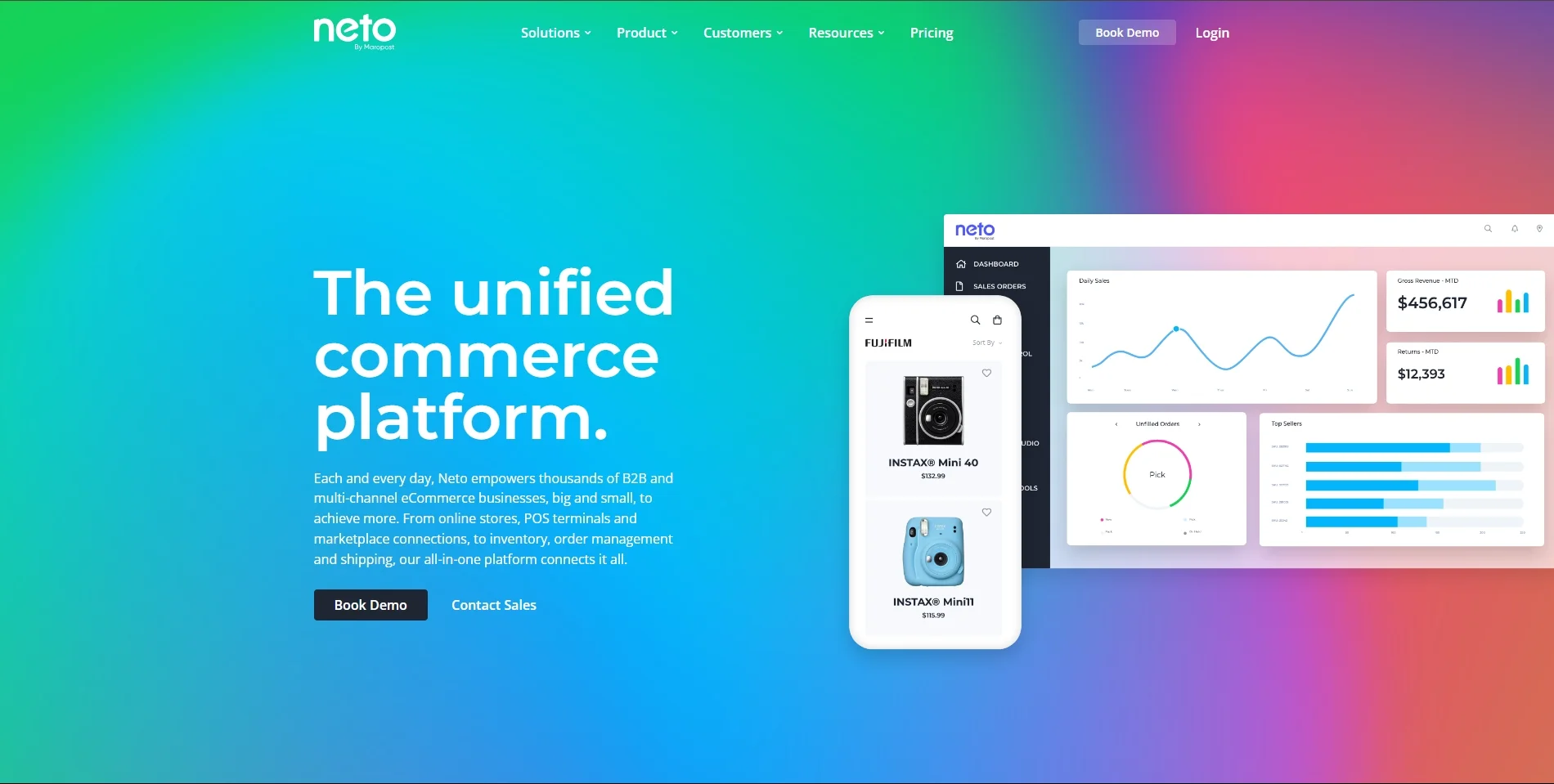
However, this ambition comes with a trade-off. Neto's learning curve can be steep, potentially overwhelming users new to eCommerce or those prioritizing ease of use. Its interface, while powerful, lacks the intuitive design and seamless navigation found in Shopify. Additionally, Neto's app store, although growing, falls short of the sheer volume and variety offered by Shopify, potentially limiting integrations and customizations.
Ultimately, Neto might appeal to established businesses with specific technical requirements who are willing to invest time in mastering the platform. However, for those seeking a user-friendly experience, a vast app ecosystem, and a thriving community for support, Shopify remains the more attractive option.
Pros | Cons |
- Can handle complex inventory across multiple channels. - Good built-in marketing features. - Offer good control and flexibility over store's design and functionalities. - Require no transaction fee on every purchase. - Is equipped with powerful features for wholesale and B2B commerce. - Provides powerful multichannel selling ability. | - Require steeper learning curve than Shopify. - Provide limited theme and app selections. - Might be less user-friendly than other hosted counterparts. |
Shopify vs Neto: Which should you choose?
I cannot deny that both Shopify and Neto are great eCommerce solutions, but each of them shines in their own way.
So, you should go for Shopify if you are:
- Startups and small businesses since Shopify's user-friendly interface and straightforward setup make it ideal for beginners.
- Entrepreneurs seeking simplicity, who prefer a hassle-free experience, with Shopify managing the technical aspects.
- Businesses focus on growth because Shopify's scalability allows you to easily add features and expand as your business evolves.
- Sellers prioritize app integrations and want to leverage the large selection of Shopify extensions.
Nonetheless, Neto will be the ideal option if you are:
- Established businesses with complex needs like managing large inventories, multiple sales channels, and complicated workflows.
- Businesses with a strong technical foundation
- Companies prioritizing customization and control
Seamlessly migrate your store from Neto to Shopify!
LitExtension can safely transfer your products, customers, and orders to unlock more growth on the new platform.

Pricing – A Tie Between Shopify vs Neto
When choosing between Shopify and Neto, understanding the pricing structure is crucial. Both platforms offer tiered pricing plans, with costs increasing alongside features and capabilities.
Shopify provides three standard pricing plans, ranging from $29 to $299 per month (if billed annually). Besides, it also offers a Starter plan that costs only $5 per month with limited features, and a Shopify Plus tier that focuses solely on high-volume businesses and enterprises. However, Shopify also charges transaction fees on every sale unless you use their in-house payment gateway, Shopify Payments. These fees can add up, especially for businesses with high sales volumes.
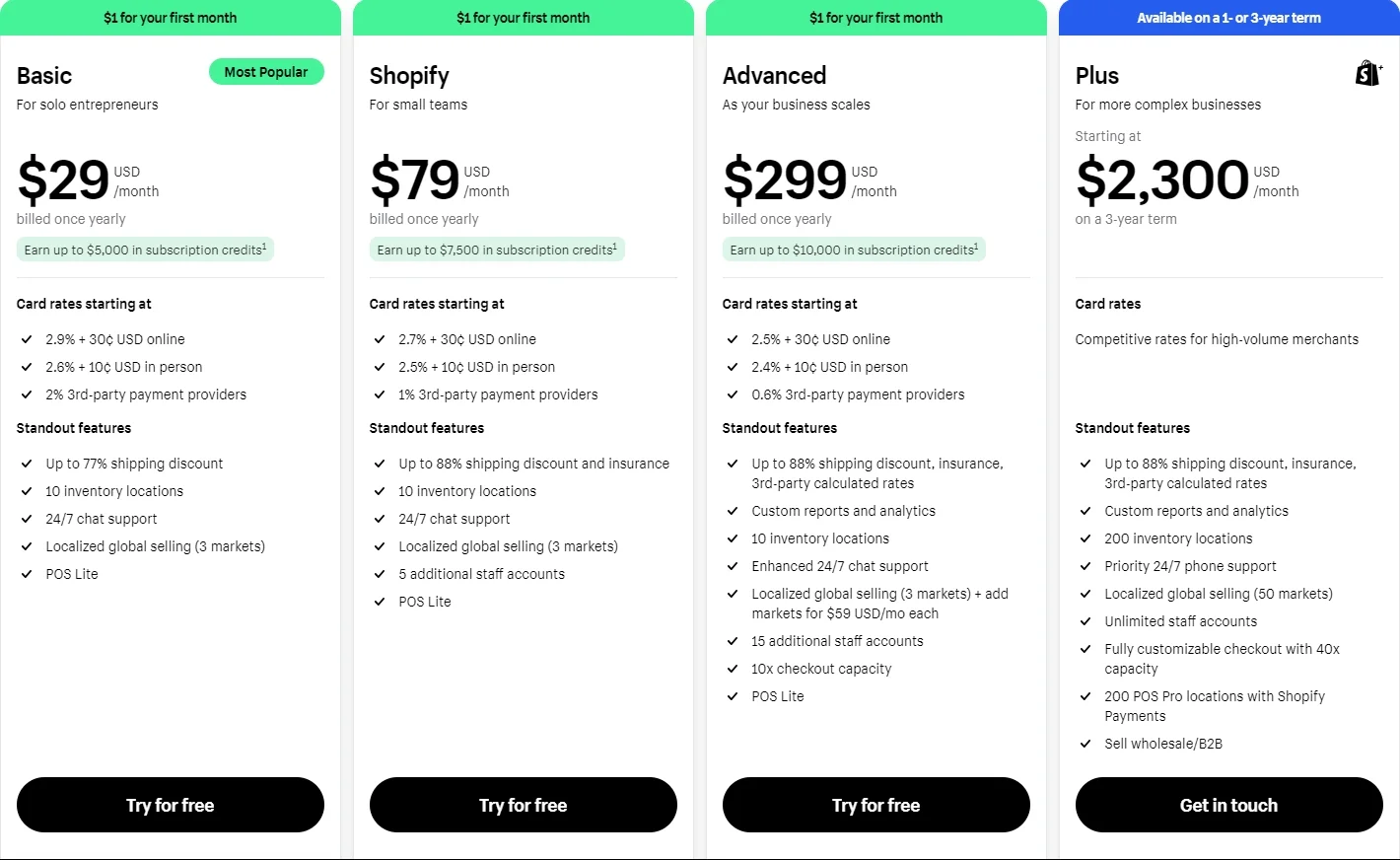
Neto, on the other hand, positions itself with a more transparent pricing model. While its plans generally start at a higher price point than Shopify's, ranging from around $49 to $299 per month, they do not include any transaction fees, regardless of the payment gateway you choose. This can be a significant advantage for businesses processing a large number of orders.
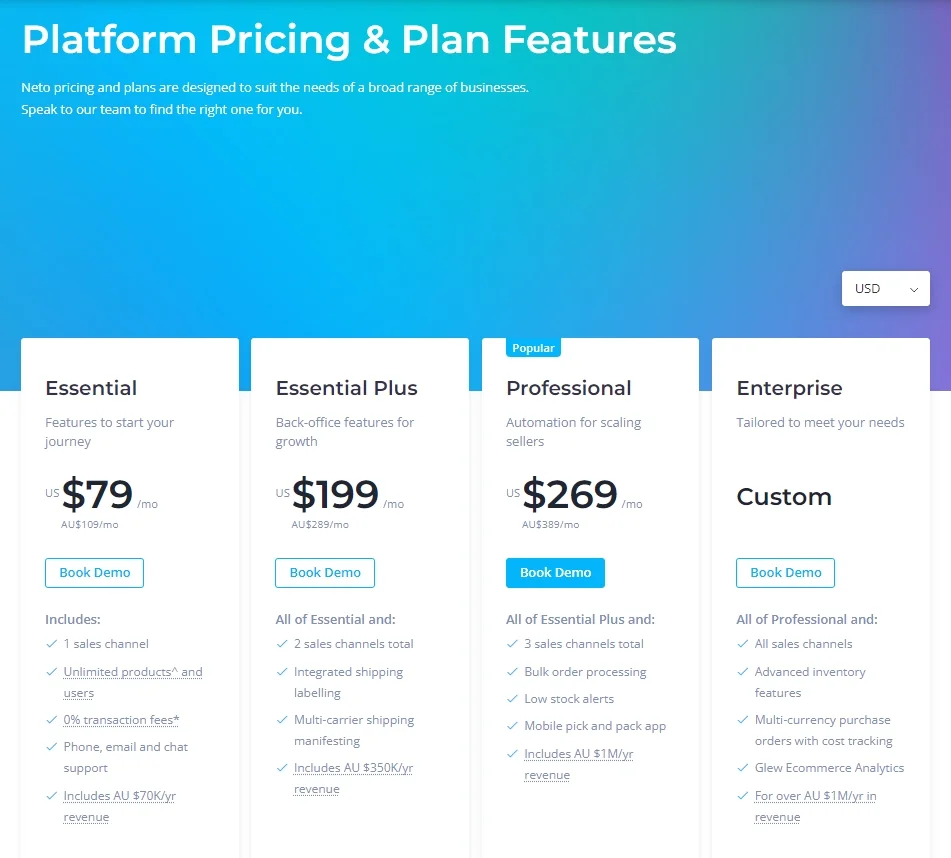
The verdict:
When it comes to Shopify vs Neto in terms of pricing, I think both are tie. For businesses with lower sales volumes, especially those comfortable using Shopify Payments, Shopify's lower monthly fees might be more appealing. However, as your sales grow, Neto's no-transaction fee structure can result in significant savings, even with its higher monthly costs. It's essential to calculate your potential expenses based on your projected sales and desired features to determine which platform offers the best value for your investment.
Ease of Use – Shopify Wins
Between Shopify vs Neto in ease of use, Shopify consistently ranks high, attracting both eCommerce newcomers and seasoned sellers seeking a hassle-free experience. Neto, with its more comprehensive approach, presents a steeper learning curve that might intimidate less tech-savvy users.
One of the most striking differences between the two platforms is evident right from the start: the onboarding process. Shopify welcomes new users with a simple, guided setup that walks you through the essentials. You're prompted to choose a theme, customize your store's appearance, add your first products, and set up payment gateways. The process feels intuitive and encourages exploration without overwhelming you with technical details.
Shopify's dashboard is designed with clarity and simplicity in mind. The menu is logically organized, providing easy access to core functionalities like product management, order fulfillment, customer data, and basic analytics. Important tasks are often just a click or two away, and the interface provides helpful tooltips and explanations along the way.

Neto, on the other hand, throws you into the deep end a bit quicker. Yes, it offers a setup wizard, but it's not as user-friendly and assumes a greater level of eCommerce knowledge. New users might find themselves needing to consult help documents or contact support to understand certain settings and configurations. This difference in approach extends beyond the initial setup and permeates the overall user interface.
Neto's dashboard, while visually appealing, feels more cluttered and less intuitive. The platform offers a wealth of features, which, while beneficial for advanced users, can make it challenging for beginners to find what they need. For example, accessing basic settings like shipping options or tax configuration might require navigating through multiple submenus, whereas Shopify provides quick access to these within the main dashboard.
The verdict:
Shopify undoubtedly takes the crown when it comes to ease of use between Shopify vs Neto. It excels in providing a smooth and intuitive onboarding experience, guiding new users through the setup process with ease. Its clean, well-organized dashboard prioritizes clarity and ease of navigation.
Themes and Customization – Shopify Wins
When comparing Shopify vs Neto, I cannot forget to mention the theme and template and how easily you can achieve your desired look and feel. Both Shopify and Neto offer themes and customization options, but their approach to empowering users, especially those without coding experience, differs significantly.
Shopify shines in its ability to make the design process both accessible and enjoyable. It offers a curated selection of professionally designed themes, both free and paid, that cater to a wide range of industries and aesthetics. These themes aren't just visually appealing; they are also mobile-responsive, ensuring a seamless experience for shoppers on any device.
On top of that, Shopify's true strength lies in its intuitive theme editor, a tool that allows even the least technical users to customize fonts, colors, layouts, and other visual elements with ease. While more advanced customizations might require some HTML and CSS knowledge, Shopify provides ample documentation and support to guide users through the process.

On the other hand, Neto takes a different approach, providing flexibility and control for users with coding expertise. While this might appeal to developers or businesses with highly specific design requirements, it creates a significant barrier for the average user.
Neto offers a more limited selection of themes compared to Shopify, and they often lack the same level of polish and modern design sensibilities. The platform's customization options rely heavily on users' ability to directly modify theme files, a task that requires a strong understanding of coding languages and web development principles.
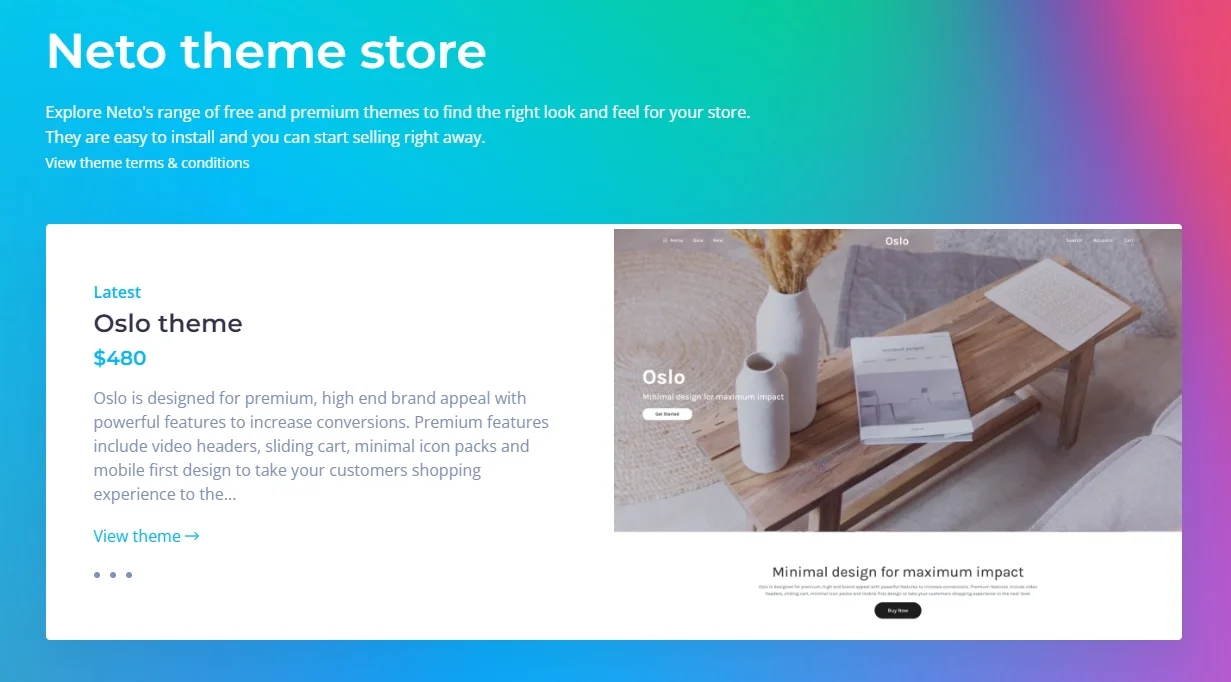
The verdict:
For users seeking a seamless and easy design experience, Shopify stands out as the clear winner between Shopify vs Neto. Its intuitive theme editor, diverse theme selection, and focus on user-friendliness make it easy to create a stunning and on-brand online store.
Payment Gateway Options – Shopify Wins
A smooth and secure checkout experience is important for any successful online business. Both Shopify and Neto understand this, offering integrations with various payment gateways to facilitate seamless transactions between merchants and their customers. However, these platforms distinguish themselves significantly in the selection of payment options they offer.
Shopify makes its name by providing a comprehensive and globally-minded approach to payment processing. Its platform boasts an impressive library of over 100 payment gateways, spanning major credit card providers like Visa, Mastercard, and American Express, popular digital wallets like PayPal, Apple Pay, and Google Pay, as well as numerous region-specific solutions. This extensive selection ensures you can cater to a diverse customer base, offering preferred payment methods regardless of location, which is critical for expanding your reach and minimizing cart abandonment rates.
Furthermore, Shopify provides its own in-house solution, Shopify Payments. Choosing Shopify Payments not only provides you with competitive transaction rates but also eliminates the platform's standard transaction fees, making it a cost-effective choice for businesses of all sizes.
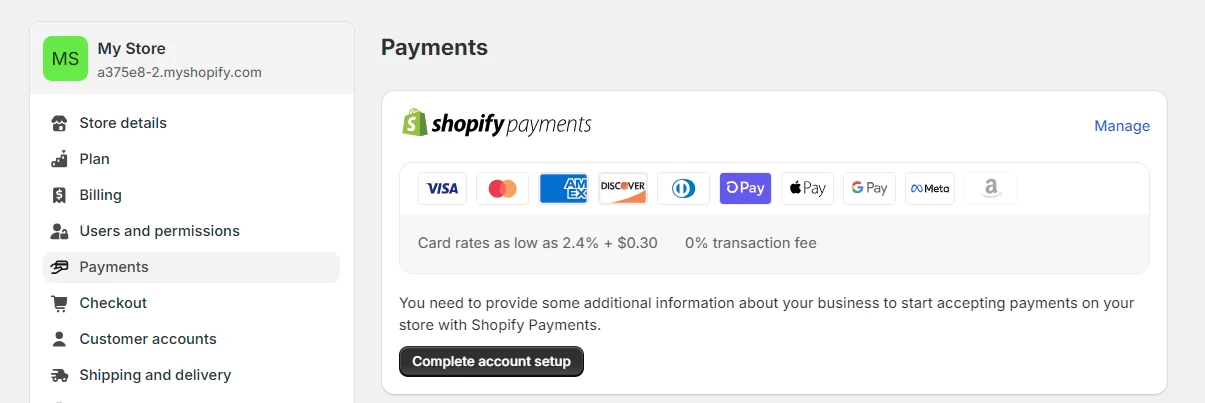
Neto, while offering integrations with popular payment gateways like Stripe, PayPal, and Braintree, provides a more limited selection compared to Shopify. This restricted range might not pose significant challenges for businesses operating solely in regions with well-established payment infrastructures. However, it could present a significant roadblock for businesses catering to niche markets or targeting international customers who might rely on less common or region-specific payment options.
The verdict:
Between Shopify vs Neto, I must say Shopify clearly is the winner in terms of payment gateway options. Its commitment to providing a globally inclusive checkout experience, coupled with the cost-effectiveness and convenience of its integrated solution, Shopify Payments, empowers businesses to maximize revenue and offer a seamless customer experience.
Shipping and Fulfillment – Shopify Wins
Shopify excels in simplifying shipping for businesses of all sizes. Its intuitive interface makes it easy to set up shipping rates based on weight, location, or order value. You can create flat-rate shipping options, offer free shipping promotions, and even set up real-time carrier-calculated shipping rates for accurate pricing at checkout.
Shopify also integrates seamlessly with a wide range of shipping carriers, including major players like UPS, FedEx, DHL, and USPS, as well as regional and local carriers. This flexibility allows you to choose the most cost-effective and efficient shipping options for your specific needs and customer base.
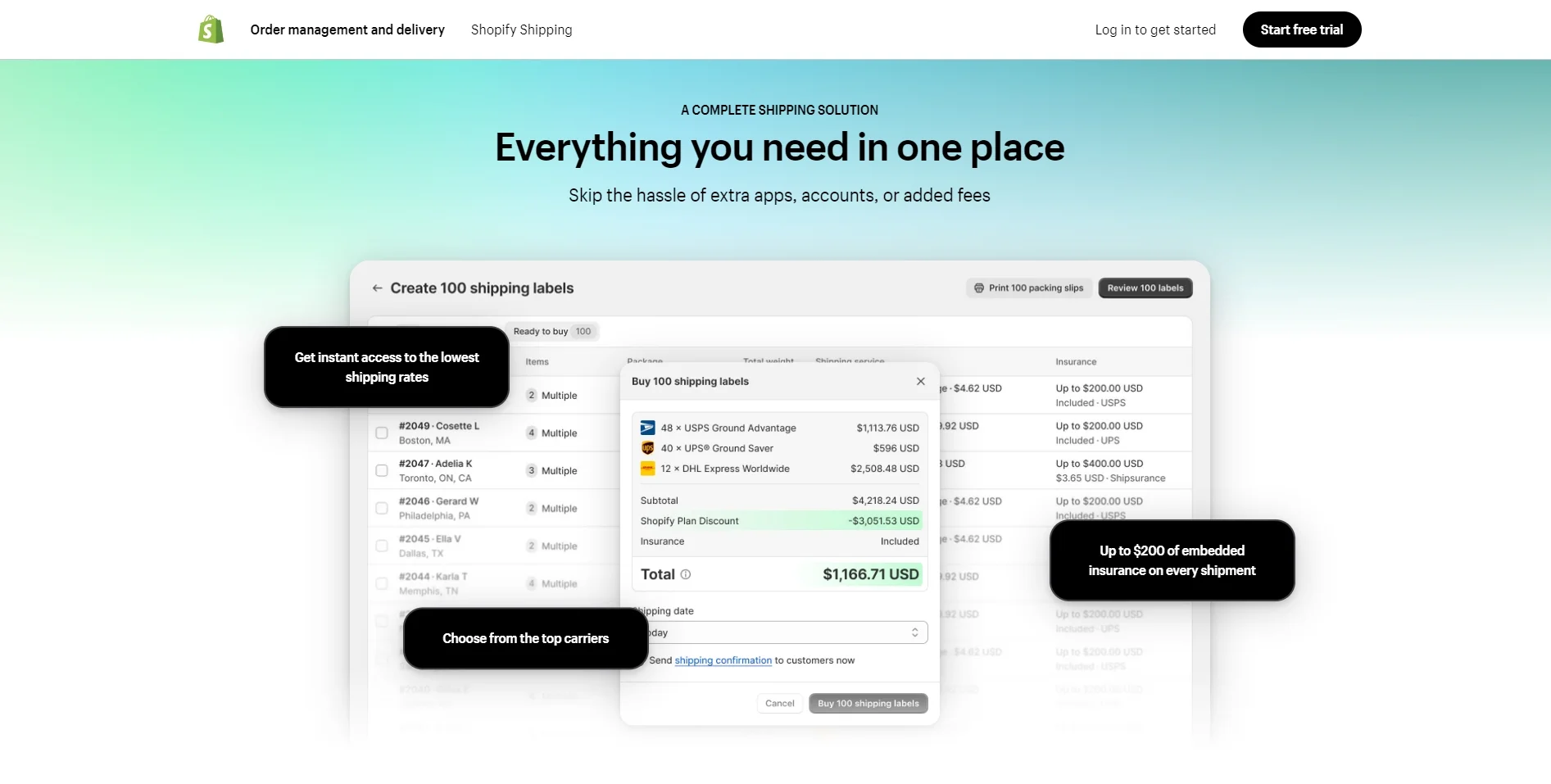
Beyond shipping, Shopify offers robust integrations with various fulfillment services, including dropshipping platforms, third-party logistics providers (3PLs), and order fulfillment apps. This ecosystem of integrations provides businesses with the flexibility to outsource fulfillment operations entirely, partially, or manage them in-house, depending on their resources and growth stage. Whether you're just starting with a handful of orders or scaling rapidly, Shopify's fulfillment ecosystem can adapt to your evolving needs.
While Neto also provides shipping and fulfillment capabilities, its approach is less intuitive and less flexible compared to Shopify. Setting up shipping rates and managing carriers within Neto can feel more complex, often requiring a deeper understanding of the platform's settings and configurations. Neto's integrations with third-party fulfillment services are also more limited, potentially restricting your options if you choose to outsource these operations.
This lack of flexibility might be particularly challenging for businesses experiencing rapid growth or needing to adapt quickly to changing market demands.
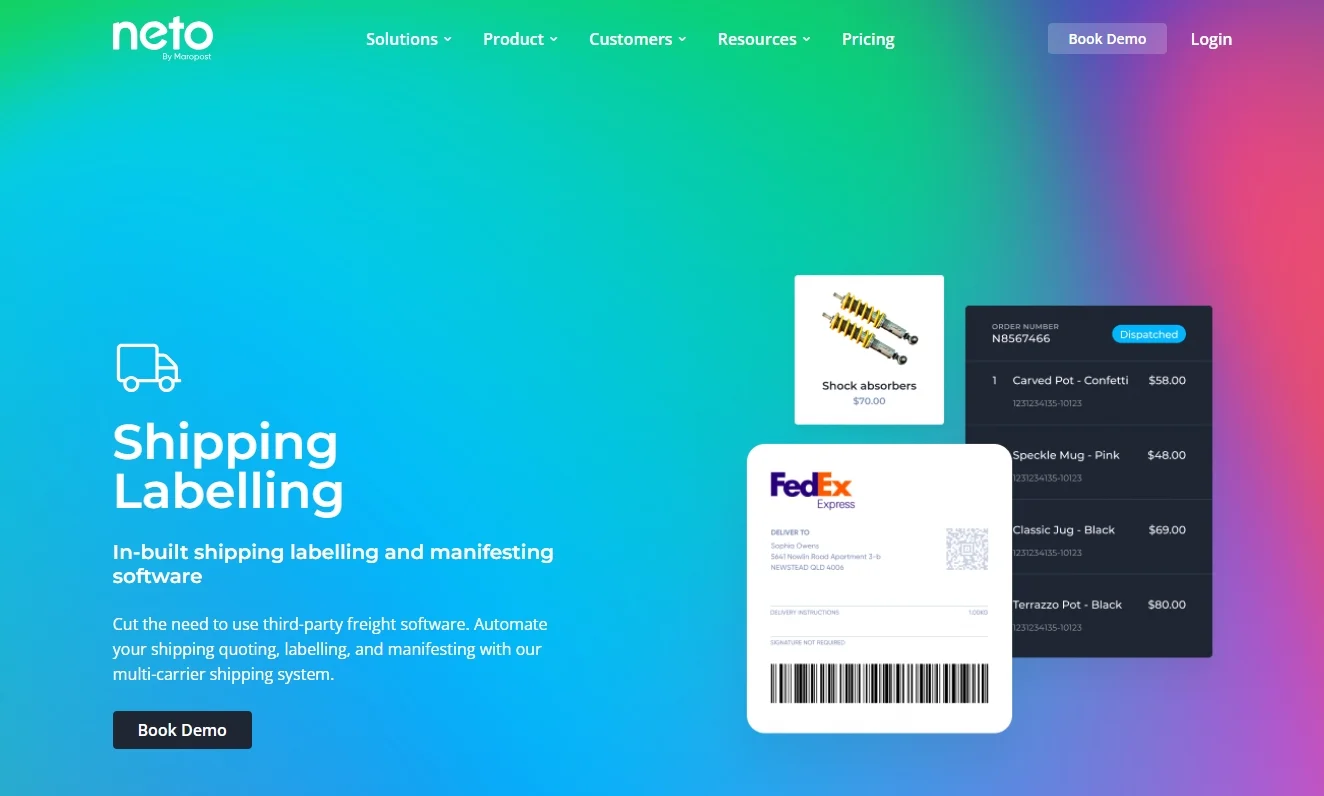
The verdict:
Shopify presents itself as the clear frontrunner when it comes to shipping and fulfillment between Shopify vs Neto. Its intuitive interface, extensive carrier integrations, and robust fulfillment ecosystem empower businesses of all sizes to manage these crucial operations with ease and efficiency. Whether you're shipping orders yourself or leveraging third-party fulfillment services, Shopify provides the flexibility and scalability to optimize your processes and provide a seamless customer experience.
eCommerce Functions Between Shopify vs Neto
Inventory management – Neto wins
Neto positions itself as an all-in-one platform with inventory management as a core strength. It allows you to manage stock across various online and offline channels, automate purchase orders, and track inventory in real time.
I must admit that Neto's true power lies in its ability to handle complex inventory scenarios straight out of the box. Features like batch tracking, serialized inventory management for unique items, and multi-warehouse management are all built-in. This makes Neto particularly suitable for established businesses with large product catalogs, intricate supply chains involving multiple suppliers or warehouses, or those heavily involved in wholesale operations.
On the flip side, Shopify, while offering comprehensive inventory management tools, focuses on providing a user-friendly experience, especially for growing businesses. Adding and tracking products is intuitive, managing variations like size and color is straightforward, and setting up automatic low-stock alerts is a breeze. However, you'll notice that Shopify doesn't offer the same depth of built-in features as Neto when it comes to managing the highly specific inventory scenarios that Neto handles so well natively.
The verdict:
Neto ultimately takes the lead in the Shopify vs Neto battle of inventory management. It comes with a powerful built-in ability to keep track of and handle products from different selling channels without having to use another third-party service.
Promotion & marketing – Neto wins
Shopify provides a core set of marketing tools directly within its platform. You can easily create discount codes and run sales promotions, enticing customers with special offers and limited-time deals. Additionally, Shopify offers basic email marketing capabilities, allowing you to send out newsletters and product announcements to keep your customers engaged.
While these features provide a solid foundation for getting started with eCommerce marketing, they are not as advanced or as comprehensive as those offered by some dedicated marketing platforms.
Neto, in contrast, takes a more self-contained approach, aiming to provide a more comprehensive suite of built-in marketing tools. You'll find the same capabilities for creating discount codes, running promotions, and sending out email newsletters that are available in Shopify.
However, Neto goes a step further by offering additional features like automated abandoned cart emails, which can help recover lost sales by reminding customers of items left in their online shopping carts. This focus on providing a wider range of built-in marketing tools directly within the platform makes Neto a compelling option for businesses that prioritize simplicity and prefer to manage their marketing efforts from a central location.
The verdict:
While both platforms offer a decent selection of built-in marketing tools, Neto holds a slight edge in this Shoipfy vs Neto comparison. Its inclusion of features like abandoned cart recovery emails, which often require third-party integrations in Shopify, demonstrates a greater commitment to providing a complete marketing solution directly within the platform. This can be particularly beneficial for businesses with limited budgets or those who prefer to minimize reliance on external tools and integrations.
Report and analytics – Shopify Wins
Shopify equips businesses with a robust set of built-in reporting tools designed to provide a clear picture of their store’s performance. From the Shopify admin dashboard, you can track key metrics such as total sales, average order value, and conversion rates. These reports offer insights into your overall store’s health and identify areas for improvement.
Shopify also provides detailed reports on your product performance, allowing you to identify your best-selling items, analyze inventory levels, and make informed decisions about product stocking and marketing. Furthermore, Shopify's customer reports offer valuable insights into customer behavior, purchase history, and demographics. While the built-in features might not be as customizable as third-party analytics tools, they provide a solid foundation for data-driven decision-making.
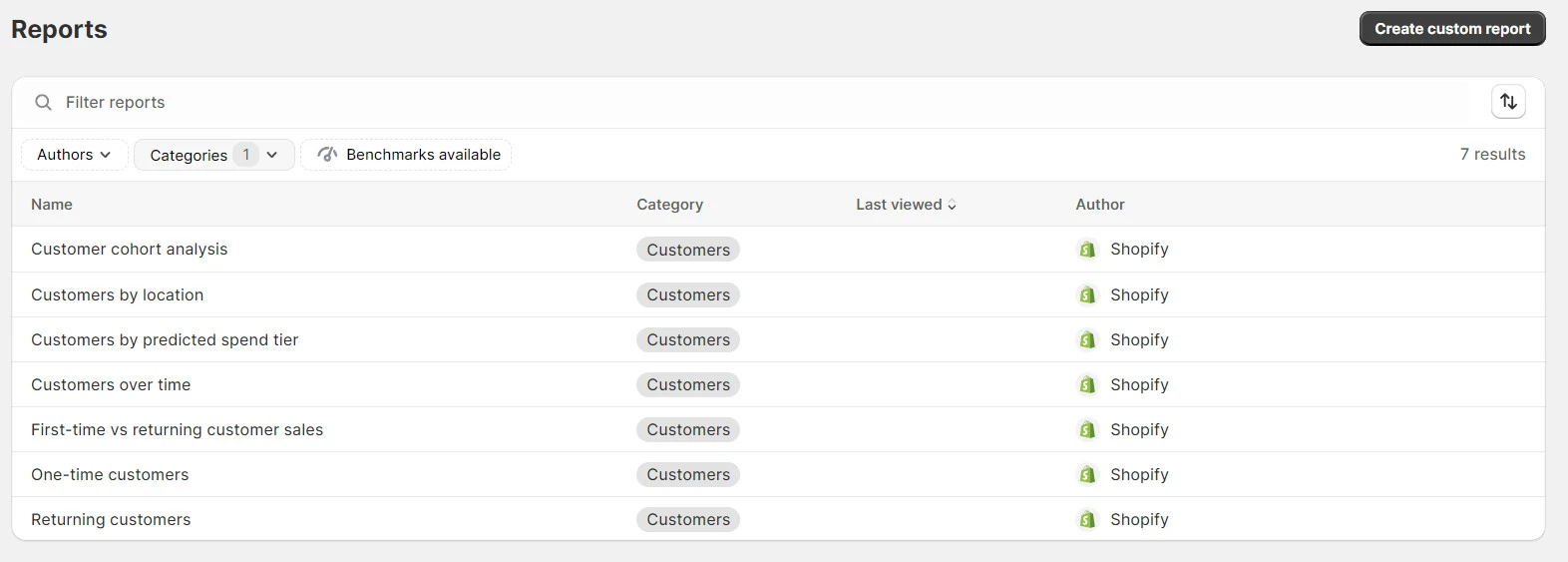
Neto, while offering reporting functionalities, doesn’t match the comprehensiveness of Shopify’s built-in analytics. You can access basic sales data, such as total revenue and order volume, but the depth and detail of these reports are more limited compared to Shopify. Neto's product reports provide a general overview of product performance but lack the granular insights into inventory management and customer segmentation that Shopify offers. This can make it challenging to identify trends, understand customer buying habits, or make informed decisions about inventory optimization and marketing.
The verdict:
When it comes to built-in reporting and analytics between Shopify vs Neto, Shopify stands out as the superior option. Its comprehensive dashboards, detailed reports on sales, product performance, and customer behavior provide businesses with greater insights into their online store’s performance.
Security – A Tie Between Shopify vs Neto
Shopify takes a multi-layered approach to security, ensuring that its platform meets the highest industry standards. All Shopify stores benefit from a secure HTTPS connection with an SSL certificate provided directly by the platform. This encrypts all data transmitted between your store and your customers' browsers, safeguarding sensitive information like credit card details and personal data.
Shopify is also Level 1 PCI DSS compliant, meaning it adheres to the Payment Card Industry Data Security Standard, a set of rigorous security requirements designed to protect credit card transactions. This compliance assures merchants and customers that Shopify prioritizes data security and follows best practices. Additionally, Shopify features built-in fraud analysis tools that help identify suspicious orders and potential fraudulent activity, allowing you to take proactive steps to mitigate risks.
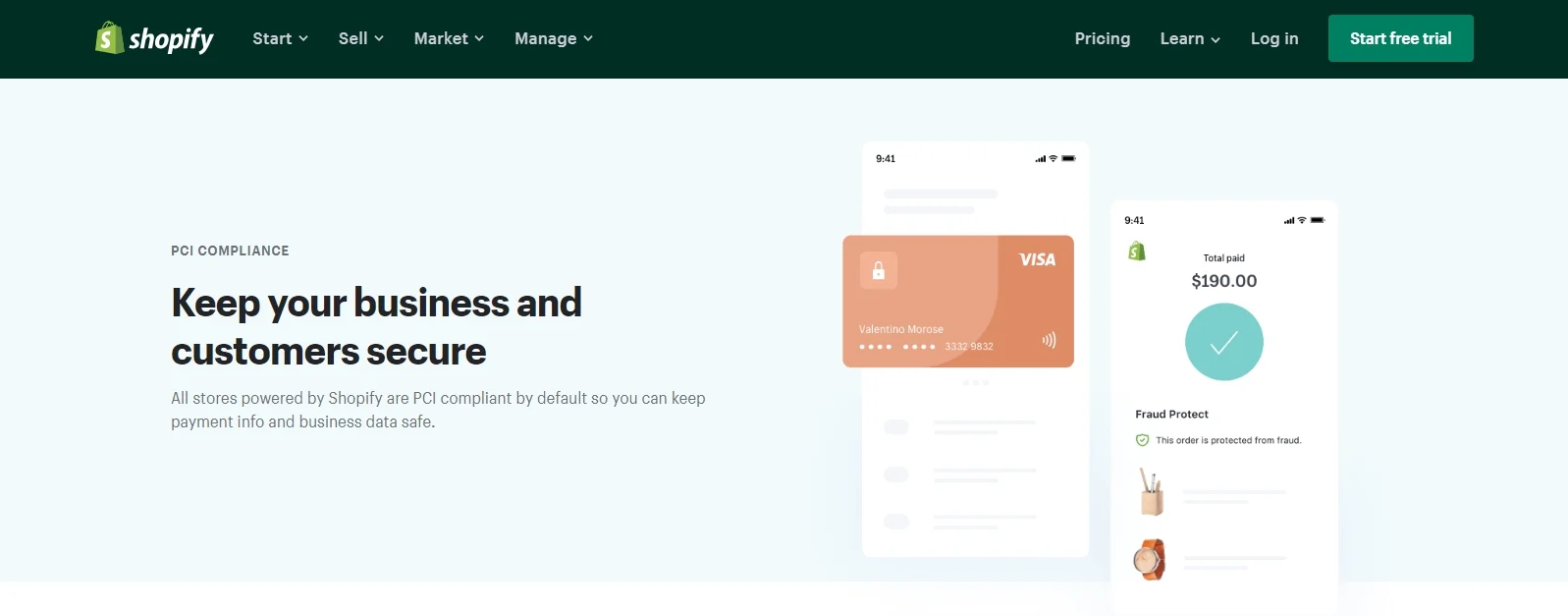
Neto shares Shopify's commitment to providing a secure eCommerce environment. It also offers a secure HTTPS connection with an SSL certificate included as part of its core platform, ensuring that all data transmitted to and from your online store is encrypted.
Like Shopify, Neto is Level 1 PCI DSS compliant, adhering to the same stringent security standards for processing card payments. This shared commitment to PCI DSS compliance demonstrates that both platforms take data security seriously and meet the requirements for secure online transactions. Neto also employs robust fraud prevention measures, including address verification systems (AVS) and card verification value (CVV) checks, to help mitigate fraudulent transactions and protect your business and your customers.
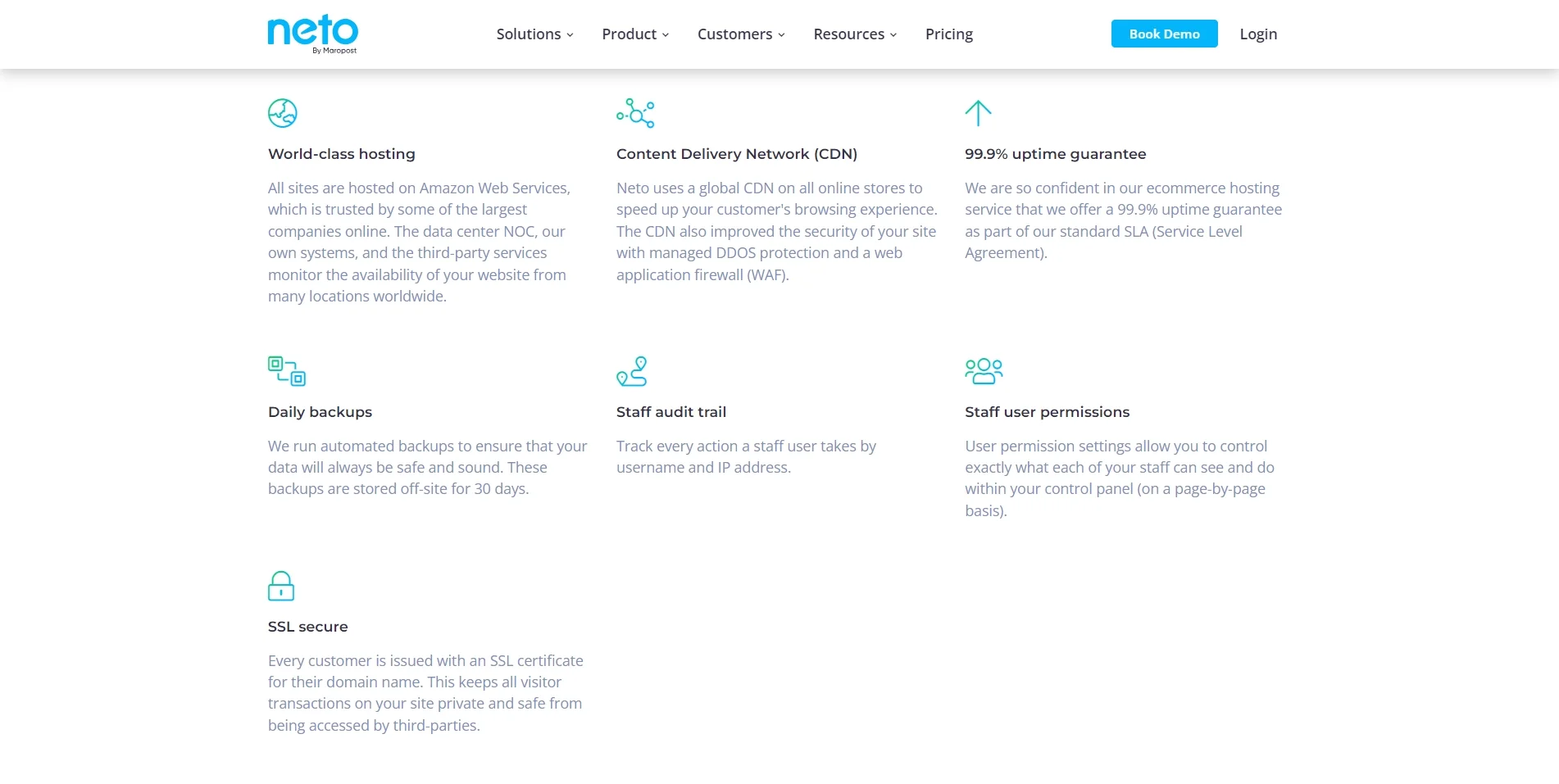
The verdict:
When it comes to security, both Shopify and Neto stand on equal footing. Both platforms offer a secure foundation for online businesses, with features like HTTPS connections with SSL certificates, Level 1 PCI DSS compliance, and robust fraud prevention measures. They prioritize data security and adhere to industry best practices, providing peace of mind for both merchants and their customers.
Support – Shopify Wins
Shopify is known for its comprehensive and readily available support system, often cited as one of its strongest features. Shopify offers 24/7 customer support through various channels, including live chat, email, and phone. This round-the-clock availability ensures that you can get assistance whenever you need it, regardless of your time zone or the urgency of your issue.
Shopify also provides a vast and well-organized help center with a wealth of documentation, including step-by-step guides, tutorials, and FAQs. This self-service knowledge base empowers merchants to troubleshoot issues independently and find answers to common questions quickly. For more complex problems or guidance specific to their businesses, Shopify merchants can leverage the platform's extensive network of certified experts, offering specialized support for design, development, marketing, and more.
Neto also provides customer support to its users but takes a more tiered approach. While Neto offers phone and email support, it doesn't provide 24/7 availability like Shopify. Access to phone support may depend on your pricing plan, with higher-tier plans offering more extended support hours. Neto also has a help center with documentation and FAQs; however, it's not as extensive or as user-friendly as Shopify's comprehensive knowledge base.
The verdict:
When it comes to the overall quality and accessibility of support between Shopify vs Neto, Shopify stands out as the clear winner. Its 24/7 availability across multiple channels, combined with its comprehensive help center and vast network of certified experts, provides merchants with an unmatched level of support.
Shopify vs Neto – FAQs
What is the biggest problem with Shopify?
While Shopify offers immense value, its biggest drawback for some is the reliance on paid apps for extended functionality. Essential features like advanced SEO, multi-currency selling, or more complex shipping options often require paid apps, increasing the overall cost.
Who competes against Shopify?
Shopify competes with various eCommerce platforms catering to different business sizes and needs. Key competitors include BigCommerce, Wix, Squarespace, Magento, and Salesforce Commerce Cloud.
Why is Shopify better than others?
Shopify stands out due to its user-friendliness, extensive app ecosystem, and scalability. Its intuitive interface makes it easy to use, even for beginners. The vast app store allows businesses to customize functionality extensively, while its scalable infrastructure supports growth.
Why use Shopify instead of Neto?
While Neto offers robust built-in features, Shopify is superior for businesses seeking long-term growth and flexibility. Its app ecosystem allows deeper customization and integrations, while its larger community provides more resources and support. Shopify also has a stronger focus on user experience, making it easier to manage and scale your business.
Final Thoughts
And that brings us to the end of my Shopify vs Neto comparison. Here’s my overall impression of each platform.
Neto certainly shines with its robust built-in features, particularly for businesses with immediate and complex B2B needs. Its all-in-one approach can be appealing to those seeking a quick setup and a more self-contained solution. However, this strength can also become a limitation as your business grows and your requirements evolve.
Shopify, on the other hand, embraces flexibility and customization through its extensive app ecosystem. While some essential features might require paid apps, this approach empowers businesses to tailor their online stores to their exact specifications, seamlessly integrating with leading marketing platforms, fulfillment solutions, and other business tools. This scalability, combined with Shopify's intuitive interface, vast support network, and thriving community, makes it a future-proof choice for businesses of all sizes aspiring for growth.
If you like this blog, don't forget to check out other Shopify-related articles on our platform to get more insights and expert advice.

